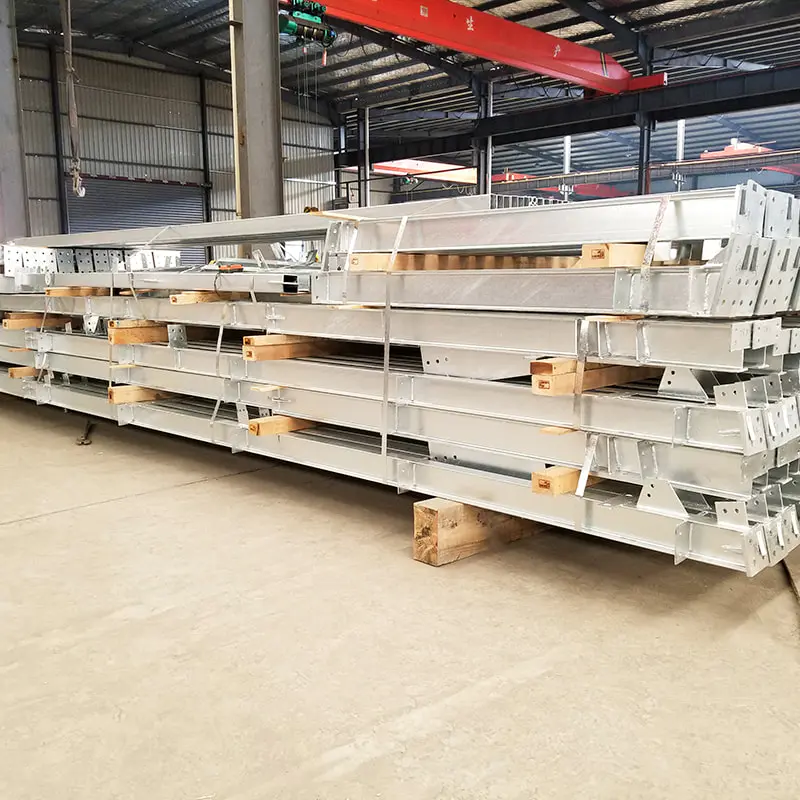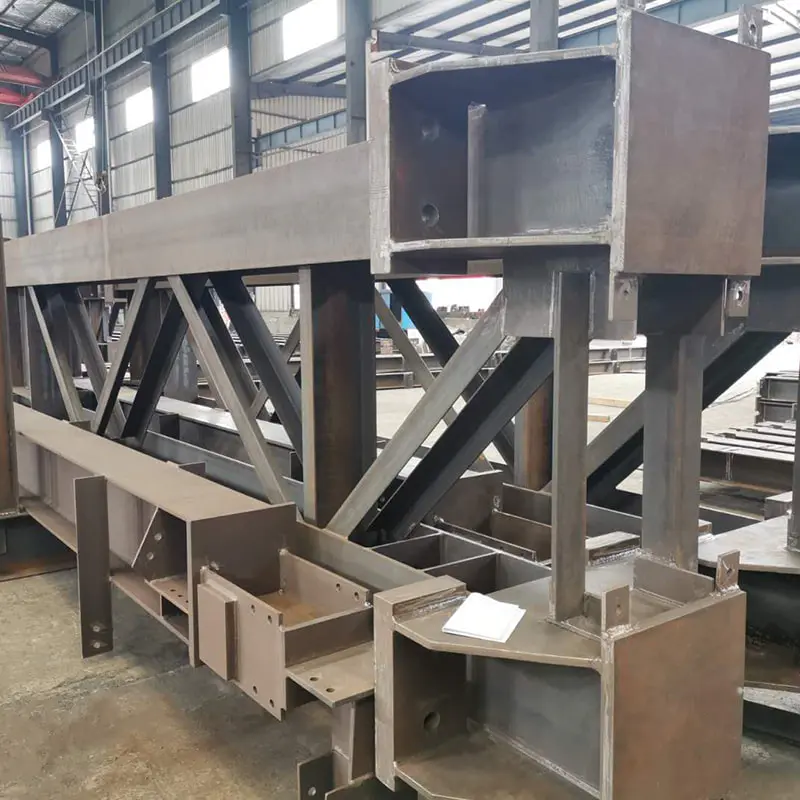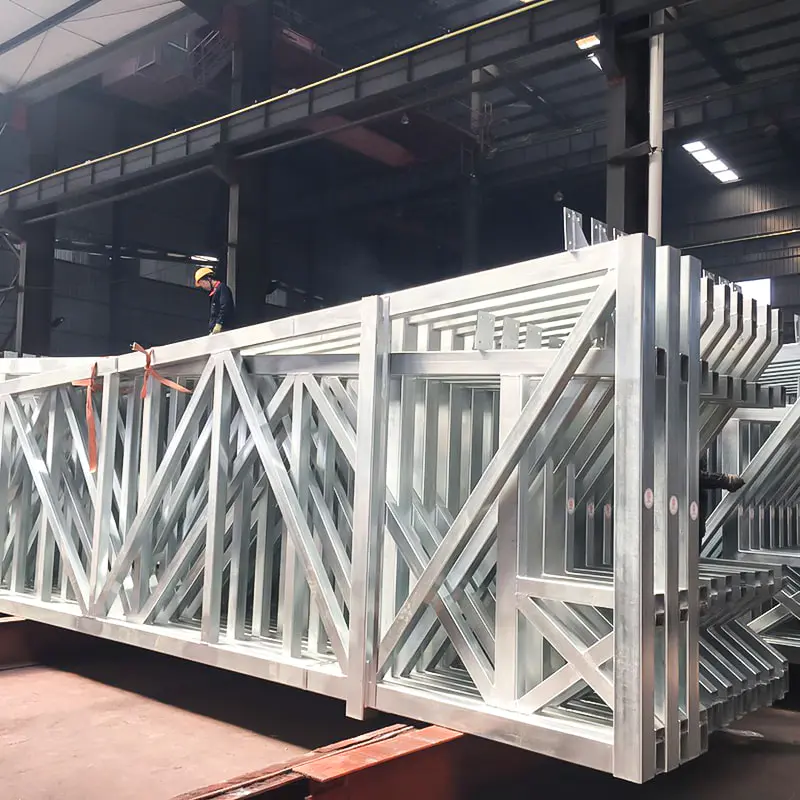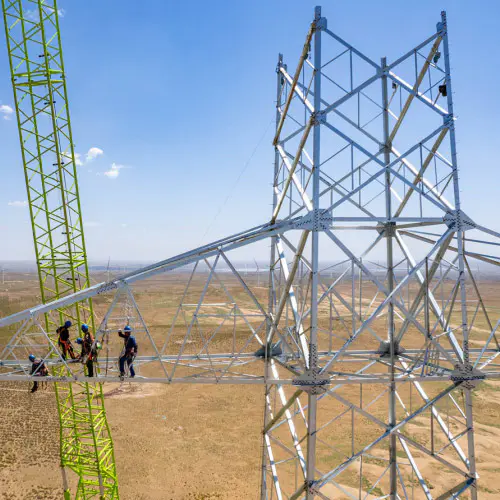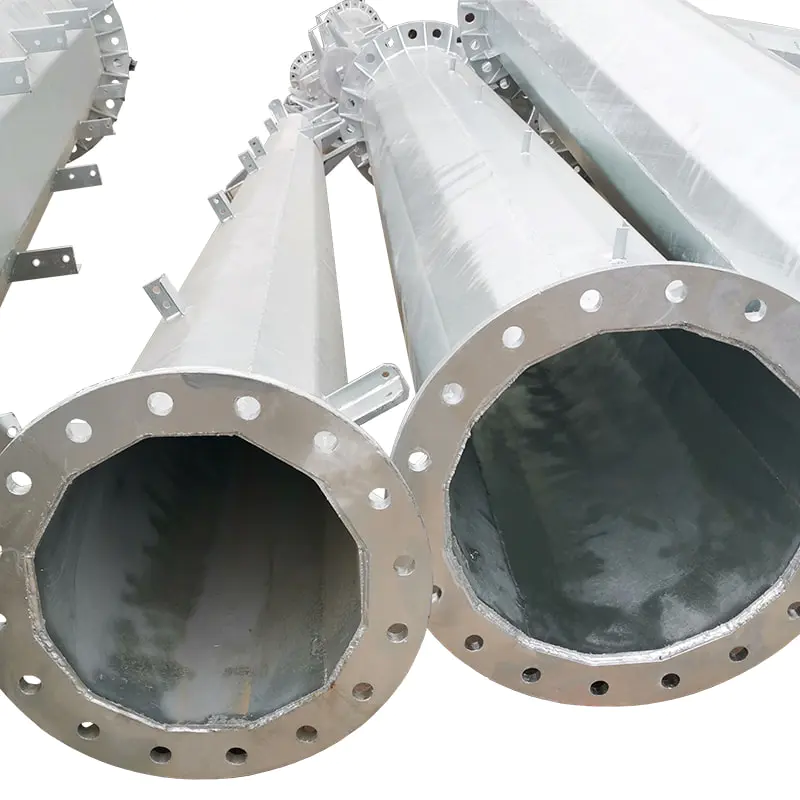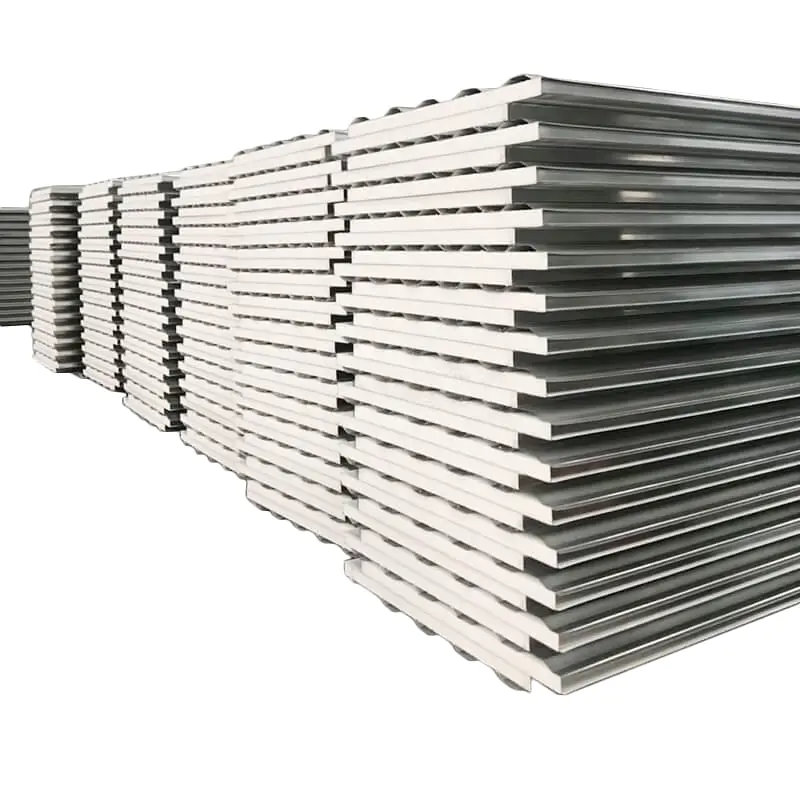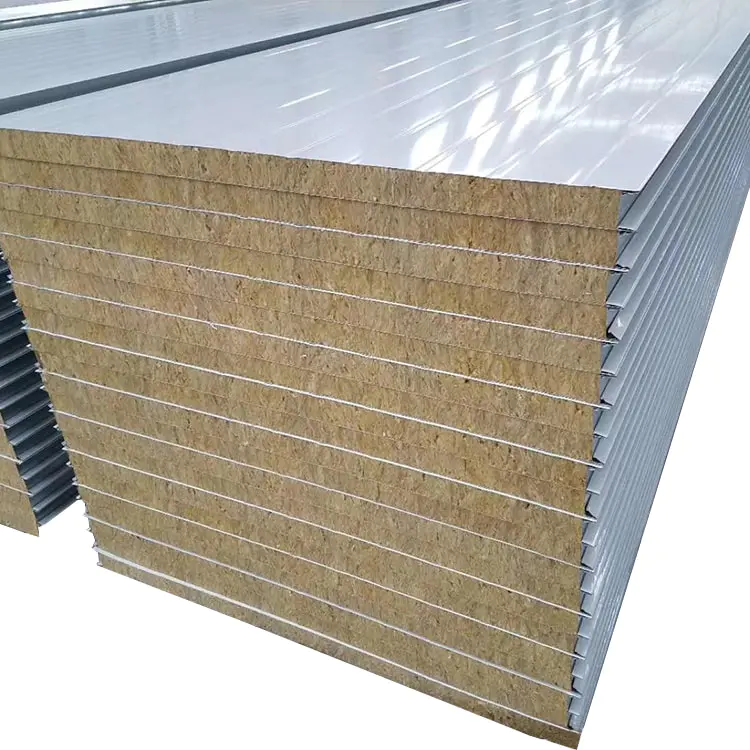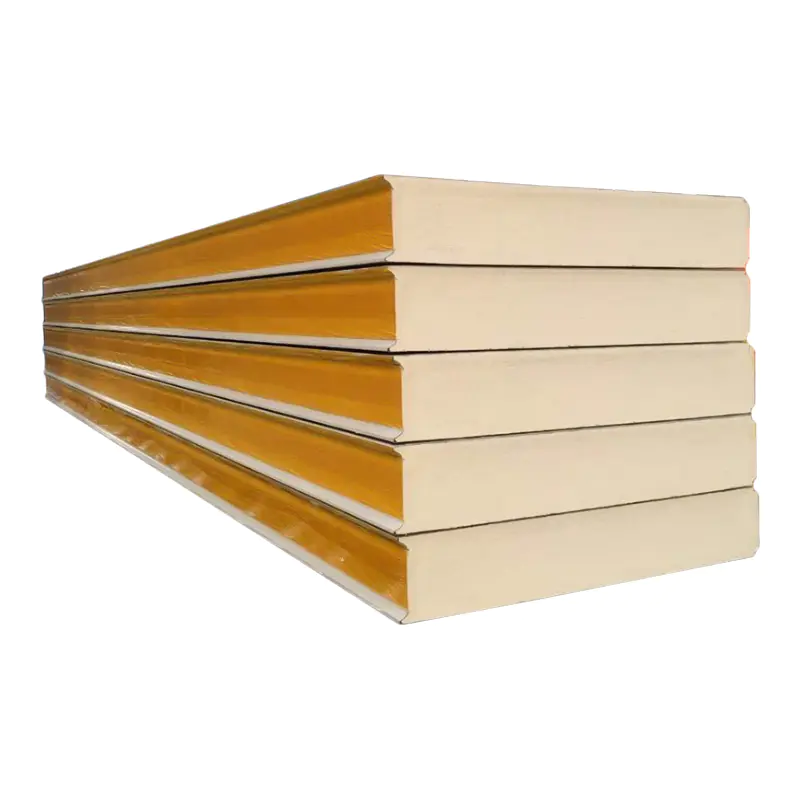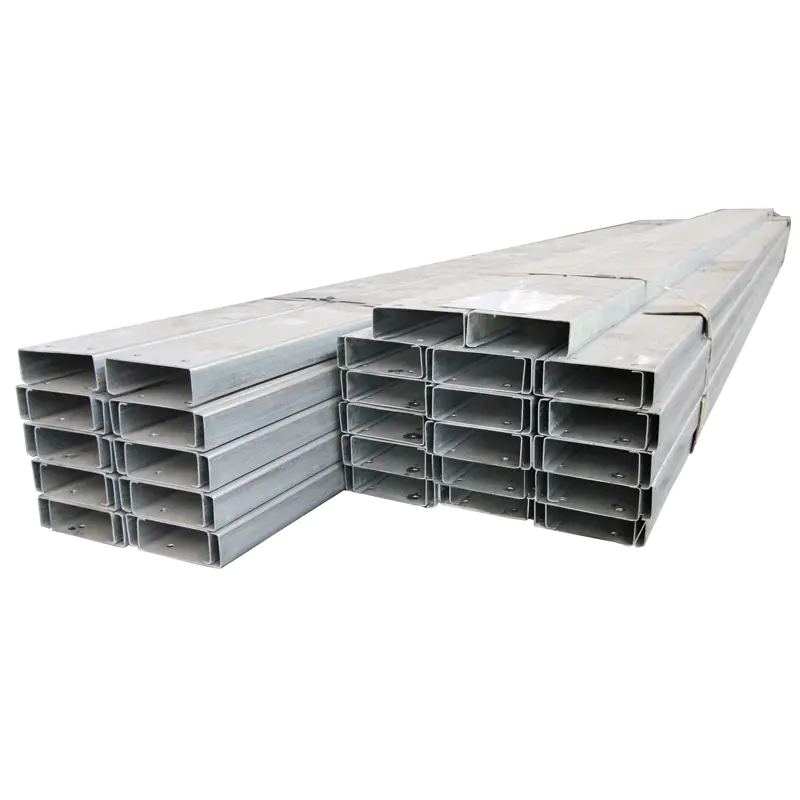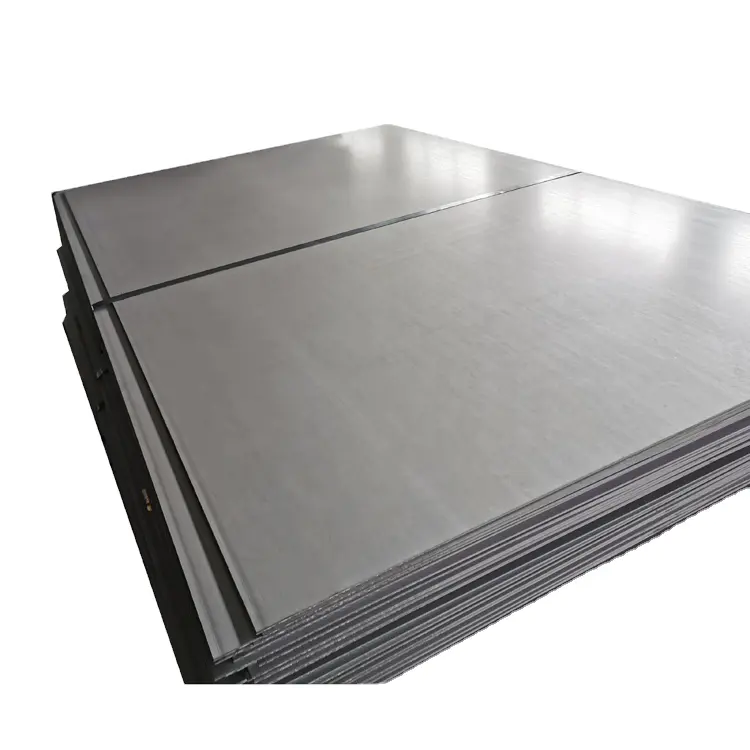In modern industrial plants, heavy machinery - such as large stamping machines, precision machine tools, forging equipment or crane systems - is the core driving force of production. A key question arises: Can common steel columns and beams reliably bear the weight and impact of these behemoths? The answer is clear: professionally designed and constructed steel structural systems are fully capable of supporting heavy industrial machinery.
Intrinsic advantages of steel
It is no accident that steel has become the preferred structural material for industrial buildings:
High strength-to-weight ratio: Compared with concrete, steel can withstand greater loads at the same weight. This allows steel columns and beams to achieve the huge bearing capacity required to support heavy equipment with relatively smaller cross-sectional dimensions.
Excellent mechanical properties: Steel has good elastic-plastic, toughness and uniform material properties. This means that it can effectively resist deformation when subjected to great pressure (elasticity) and can undergo significant plastic deformation without sudden fracture under extreme loads (toughness), providing an important safety margin.
Predictability and reliability: Modern steel production follows strict standards (such as ASTM, EN, GB), and its key mechanical properties such as yield strength and tensile strength are stable and can be accurately predicted, providing a reliable basis for the design calculation of structural engineers.
Not "one size fits all": professional design is the core
It must be emphasized that the "natural power" of steel needs to be effectively transformed into safe support through professional structural engineering design. This involves:
Accurate load calculation: Engineers must calculate the static load (self-weight), dynamic load (vibration and impact force generated during operation), and possible additional loads (such as materials and hoisting loads) of the equipment itself in detail. Impact loads are particularly critical for heavy machinery.
Structural selection and analysis: Select appropriate steel grades (such as Q235B, Q355B) and cross-sectional shapes (H-shaped steel, box-type columns, etc.) based on the load calculation results. Use mature structural analysis theory and software (such as finite element analysis FEA) to simulate the stress state of the structure under various working conditions to ensure that the stress level and deformation are within the allowable range of safety specifications (such as GB 50017).
Key node design: Column bases and beam-column connection nodes are often key locations for transmitting huge loads, and their design must be particularly careful to ensure reliable connections and clear force transmission paths. Measures such as stiffening ribs, increased connection plate size, or high-strength bolts may be required.
Consider fatigue effects: For equipment that is subject to frequent cyclic loads (such as stamping machines), structural design also needs to assess potential fatigue risks to ensure that fatigue damage does not occur during the expected service life.
Foundation design: "A tall building starts from the ground", and the foundation design of the bearing steel column is also crucial. The huge loads generated by heavy equipment are ultimately transmitted to the foundation, and the foundation must have sufficient size, strength, and stability to prevent problems such as uneven settlement.
Successful applications in reality
In practice, steel structures are widely used in various industrial plants that carry heavy machinery:
Heavy manufacturing workshops: Large presses, CNC gantry milling machines and other equipment are usually directly installed on reinforced steel platforms or supported by densely arranged steel columns below.
Power plants and petrochemical plants: Key equipment such as large turbine units and reactors are usually located in a solid steel structure frame.
Logistics warehousing: The heavy-duty shelf systems and high-level picking forklifts in large automated warehouses also rely on steel columns and beams for their support structures.
Crane system: The track beams of bridge and gantry cranes are heavy steel beams that support the cranes themselves and the heavy objects being hoisted.
Safety and redundancy: the guarantee of engineering practice
Safety is the lifeline of industrial production. A qualified steel structure design will include the necessary safety factor (usually greater than 1.5), that is, the actual load-bearing capacity of the structure far exceeds the expected load in the design to cope with potential risks such as load estimation deviations, minor material defects or accidental overloads. In addition, critical structures are often designed with redundant paths, so that even if an extreme situation occurs in a certain component, the load can be transmitted through other paths to prevent catastrophic continuous collapse.
Maintenance ensures long-term reliability
After the steel structure is built, regular inspection and maintenance are essential to ensure its long-term load-bearing capacity. This includes checking whether the steel is rusted, whether the key joints (welds, bolts) are intact, and whether the structure has abnormal deformation or vibration. Good maintenance can effectively extend the life of the structure and ensure the safe operation of the equipment.

